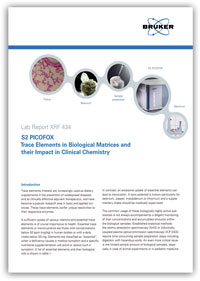TXRF Reveals Nutrient Deficiencies in COVID-19 Patients
TXRF trace element analysis was used to analyse essential nutrient deficiencies in COVID-19 patients, suggesting that zinc and selenium supplementation may support recovery. TXRF is a faster, cost-effective alternative to AAS and ICP for micro-nutrient analysis in all types of biological matrices.
Blue Scientific is the official distributor for Bruker TXRF instruments in the UK and Nordics (Norway, Sweden, Denmark, Finland, Iceland). For more information or quotes, please get in touch.
TXRF instruments
More articles about TXRF
Contact us on +44 (0)1223 422 269 or info@blue-scientific.com
TXRF in Coronavirus Research
Several micro-nutrients are known to contribute to the body’s immune response to COVID-19, including the essential trace elements Zn (zinc) and Se (selenium).
TXRF (Total Reflection X-ray Fluorescence) is a well-established method for quantifying trace elements in biological matrices in clinical chemistry. It’s an ideal technique for measuring micro-nutrient concentration.
Measuring Micro-Nutrient Deficiency
A recent study at the Institute for Experimental Endocrinology at Charité Berlin in Germany used TXRF to analyse serum samples of COVID-19 patients. Samples from survivors and non-survivors were compared with a healthy cohort.
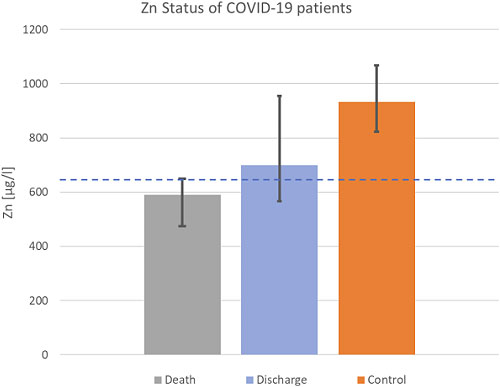
A combined deficit of Zn and Se was observed in only 0.15% of healthy people. However, 50% of non-surviving patients suffered with a deficiency. In the case of surviving patients, 20% were deficient.
The study also indicated, for the first time, that COVID-19 causes a decrease of the transporter selenoprotein P (SELENOP), which is a major storage component of selenium in biological systems.
The conclusion was that personalised Se and Zn supplements may help COVID-19 patients recover. Further intervention studies are currently in progress.
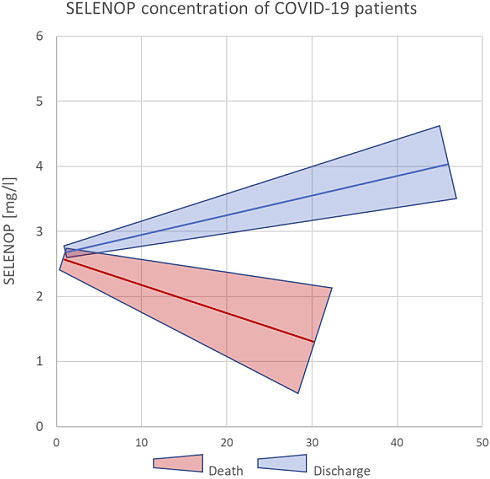
Scientific Papers
This research has been published in these papers, which contain more detail about the studies:
- Heller et al., Prediction of survival odds in COVID-19 by zinc, age and selenoprotein P as composite biomarker, Redox Biol. 38 (2021) 101764
https://doi.org/10.1016/j.redox.2020.101764 - Moghaddam et al., Selenium deficiency is associated with mortality risk from COVID-19, Nutrients 2020, 12(7), 2098
http://dx.doi.org/10.3390/nu12072098
Instrumentation
Charité Berlin used the Bruker S4 TStar and Bruker S2 Picofox TXRF spectrometers in this study:
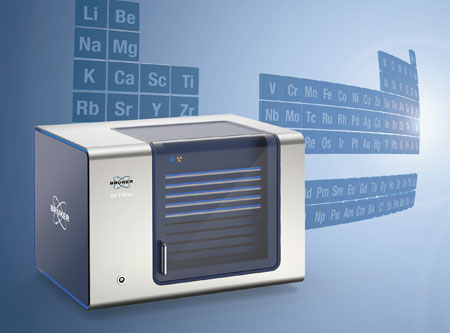
Bruker S4 TStar
- Ultra trace element analysis.
- Lowest sub-ppb detection limits.
- 24/7 routine operation.
- High capacity: 90 samples.
- Faster, cost-effective alternative to ICP, with easier sample preparation.
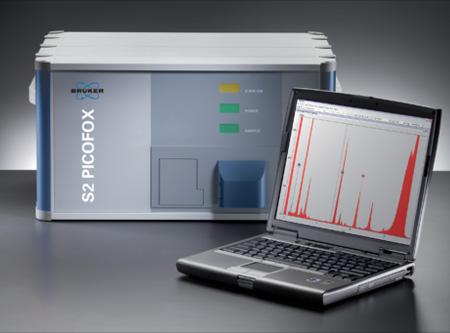
Bruker S2 PICOFOX
- Detect trace elements down to ppb and ppm.
- Requires only small sample amounts (nanogram or microgram range).
- Simultaneous multi-element trace analysis.
- Use in the lab or on-site in the field.
- Low running costs.
Trace Elements in Biological Matrices
Beyond this study, TXRF can be used to measure and monitor micro-nutrients in other types of biological samples in clinical chemistry. This can be used to study nutrient deficiency, uptake, supplementation, intoxication and more.
TXRF is faster and more cost-effective than alternative methods such as AAS and ICP. Sample preparation is simple, without time-consuming digestion involving hazardous acids. Only a small amount of the sample is needed – a huge benefit in some case.
More details and example results from several experiments are available in an application note from Bruker.
Recorded Webinar
Watch a recorded webinar from Bruker about metal analysis in biological and medical samples, in biopharmaceutical, clinical and biological research. The one hour webinar covers the analysis of essential and toxic elements, including examples from enzyme analysis and Alzheimer’s disease research. It’s presented by TXRF specialists from Bruker, together with Dr. Po-Wah So from the Phenomics Lab at King’s College London.
More Information
Blue Scientific is the official distributor of Bruker TXRF systems in the UK and Nordic region. We’re available to provide quote and help with all your questions – just get in touch:


